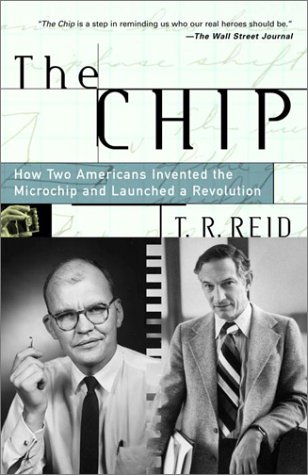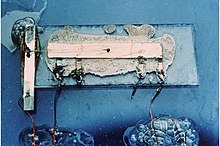 I wear an Apple watch because it monitors my health and will report to 911 and my wife if I fall. It has a couple of processors, a high-density display, and more overall computing power than the rooms full of electronics that was the IBM 360/67 on which I learned to write Fortran IV programs on a mere 55 years ago.
I wear an Apple watch because it monitors my health and will report to 911 and my wife if I fall. It has a couple of processors, a high-density display, and more overall computing power than the rooms full of electronics that was the IBM 360/67 on which I learned to write Fortran IV programs on a mere 55 years ago.

I have Jack Kilby and Robert Noyce to thank for strapping that much computing power to my wrist. Those two engineers simultaneously invented the integrated circuit a bit over 70 years ago, a technology built on Shockley’s invention of the transistor that enables billions of solid state devices to sit on a piece of silicon smaller than a dime to create a supercomputer.

T.R. Reid, who among other things wrote about technology for the Washington Post wrote The Chip in 1989 (revised in 2007). The book tells the personal and professional stories of these two men and, perhaps most important, describes their character.
Kilby and Noyce were very different men, and both were serious engineers who were driven by a need to invent things, which led them to independently solve a terrible crisis created by the invention of the transistor. Vacuum tubes are bulky so creating complex circuits that requires a lot of them takes a lot of space.
Replacing the bulky vacuum tubes with transistors and other solid-state devices allowed such circuits to be built in a smaller space. However, reliably connecting those small electronic devices was nearly impossible, a problem that became known as the “tyranny of numbers.” The two inventors independently solved that problem by creating the integrated circuit that allows all the solid-state devices to be created and connected on one chip of silicon.

A patent fight quickly erupted between Texas Instruments, where Kilby had done his magic, and Fairchild Semiconductor, where Noyce had done his. A settlement was reached after a prolonged legal battle, but the important result came from the two inventors.
Kilby and Noyce were gentlemen – something almost unheard of in today’s business environment – so when the smoke had cleared from the courtrooms and deposition hearing rooms the two men said they would prefer just to share credit for the historical invention.
And then they went on to invent other things and businesses and, for that matter the microchip industry. Reid’s book goes on to describe the creation of microprocessors, the Intel Corporation and the blossoming of Silicon Valley and the amazing technology industry that today we all take for granted.
When I was done reading the book, I decided that I would have preferred ending with the story at the invention of the integrated circuit because the book gets a little long-winded as Reid describes all the offshoots of the original invention.
But it’s a damned good book – well written and fun for anyone like me who has spent their career in the industry.
Recent Comments